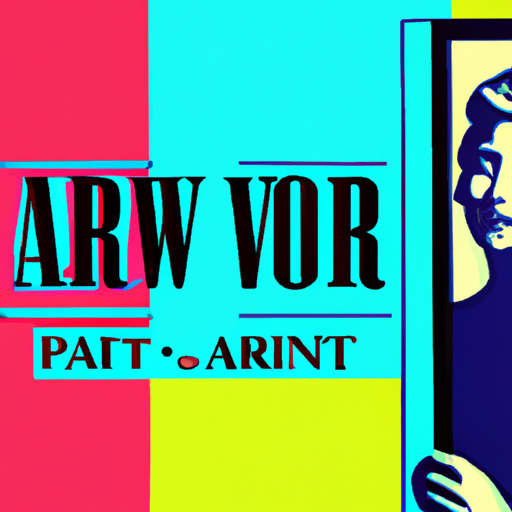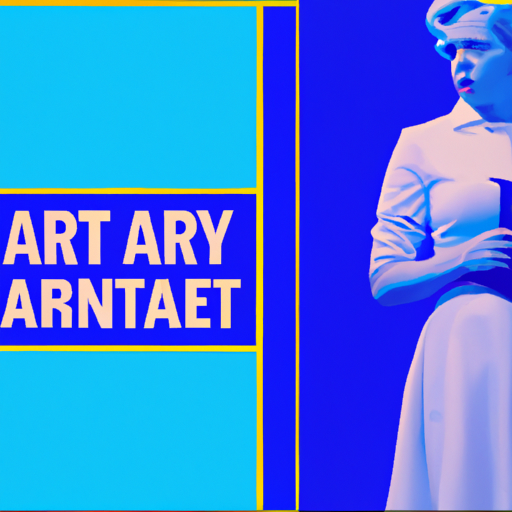
-
Table of Contents
- The Art of Poster Design: Balancing Artistry and Message
- The Power of Posters
- The Elements of Effective Poster Design
- 1. Clear Message
- 2. Visual Hierarchy
- 3. Color and Typography
- 4. Imagery and Illustration
- 5. Negative Space
- Case Studies: Iconic Posters
- 1. “Keep Calm and Carry On”
- 2. “I Want You for U.S. Army”
- 3. “Just Do It”
- Tips for Creating Impactful Posters
- 1. Know Your Audience
- 2. Keep It Simple
- 3. Experiment with Layouts
- 4. Test and Iterate
- Summary
The Art of Poster Design: Balancing Artistry and Message

Posters have been a powerful medium of communication for centuries. From promoting events to spreading social messages, posters have the ability to capture attention and convey a message in a visually appealing way. The art of poster design lies in striking the perfect balance between artistry and message. In this article, we will explore the key elements of effective poster design and how designers can create impactful posters that leave a lasting impression.
The Power of Posters
Posters have a unique ability to grab attention and convey a message quickly. They are often displayed in public spaces, where people are more likely to notice them. According to a study conducted by the Outdoor Advertising Association of America, 71% of people frequently look at billboards and posters while driving or walking. This makes posters an effective tool for reaching a wide audience.
Posters also have the advantage of being a cost-effective form of advertising. Compared to other mediums like television or radio, posters can be produced at a fraction of the cost. This makes them accessible to businesses and organizations with limited budgets.
The Elements of Effective Poster Design
Creating an effective poster requires careful consideration of various elements. Let’s explore the key elements that contribute to successful poster design:
1. Clear Message
A poster should have a clear and concise message that can be understood at a glance. The message should be communicated through both visuals and text. The use of a strong headline or tagline can help grab attention and convey the main idea of the poster. For example, the iconic “We Can Do It!” poster from World War II effectively communicated the message of women’s empowerment.
2. Visual Hierarchy
Visual hierarchy refers to the arrangement of elements in a way that guides the viewer’s attention. It helps prioritize the most important information and creates a sense of order. Designers can achieve visual hierarchy by using size, color, and placement. For example, the most important information can be highlighted in a larger font or placed at the top of the poster.
3. Color and Typography
Color and typography play a crucial role in poster design. The choice of colors can evoke certain emotions and create a specific mood. For example, warm colors like red and orange can create a sense of urgency, while cool colors like blue and green can convey a calm and peaceful message. Typography should be legible and appropriate for the message. Bold and eye-catching fonts can be used for headlines, while simpler fonts are better suited for body text.
4. Imagery and Illustration
Visual elements like imagery and illustrations can enhance the impact of a poster. They can help create a connection with the viewer and make the message more memorable. The choice of imagery should be relevant to the message and target audience. For example, a poster promoting a music festival may feature images of musicians or instruments.
5. Negative Space
Negative space, also known as white space, refers to the empty space around and between elements in a design. It helps create balance and allows the viewer’s eyes to rest. Effective use of negative space can make the poster more visually appealing and improve readability. It can also help highlight important elements and create a sense of focus.
Case Studies: Iconic Posters
Let’s take a look at some iconic posters that exemplify the art of balancing artistry and message:
1. “Keep Calm and Carry On”
The “Keep Calm and Carry On” poster, created by the British government during World War II, is a perfect example of a simple yet powerful design. The poster features a bold, red background with a white crown and the text “Keep Calm and Carry On” in a simple sans-serif font. The design conveys a message of resilience and determination in the face of adversity.
2. “I Want You for U.S. Army”
The “I Want You for U.S. Army” poster, featuring Uncle Sam pointing directly at the viewer, is an iconic recruitment poster from World War I. The poster uses bold colors, strong typography, and a direct gaze to grab attention and create a sense of urgency. The design effectively communicates the message of patriotism and the need for enlistment.
3. “Just Do It”
The “Just Do It” campaign by Nike is a prime example of how a simple phrase can become a powerful message. The campaign featured posters with a black background, white text, and the Nike logo. The minimalist design, combined with the motivational message, resonated with athletes and consumers alike. The “Just Do It” campaign became one of the most successful advertising campaigns of all time.
Tips for Creating Impactful Posters
Now that we have explored the key elements of effective poster design, let’s discuss some tips for creating impactful posters:
1. Know Your Audience
Understanding your target audience is crucial for creating a poster that resonates with them. Research their preferences, interests, and demographics to tailor your design accordingly. For example, a poster targeting young adults may use vibrant colors and modern typography, while a poster targeting professionals may use a more sophisticated and minimalist design.
2. Keep It Simple
Avoid cluttering your poster with too much information. Keep the design clean and focused on the main message. Use concise and impactful language to convey your message effectively. Remember, less is often more when it comes to poster design.
3. Experiment with Layouts
Don’t be afraid to experiment with different layouts and compositions. Try different arrangements of text and images to find the most visually appealing and balanced design. Use grids or guides to ensure alignment and consistency.
4. Test and Iterate
Before finalizing your design, gather feedback from others and test the effectiveness of your poster. Conduct surveys or focus groups to understand how your target audience perceives the message and design. Use the feedback to make necessary improvements and iterate on your design.
Summary
Effective poster design requires a careful balance between artistry and message. By considering elements such as clear messaging, visual hierarchy, color and typography, imagery and illustration, and negative space, designers can create impactful posters that capture attention and convey a message effectively. Iconic posters like “Keep Calm and Carry On,” “I Want You for U.S. Army,” and the “Just Do It” campaign by Nike demonstrate the power of well-designed posters. By understanding the target audience, keeping the design simple, experimenting with layouts, and testing and iterating, designers can create posters that leave a lasting impression. So, the next time you embark on a poster design project, remember to strike the perfect balance between artistry and message to create a visually appealing
